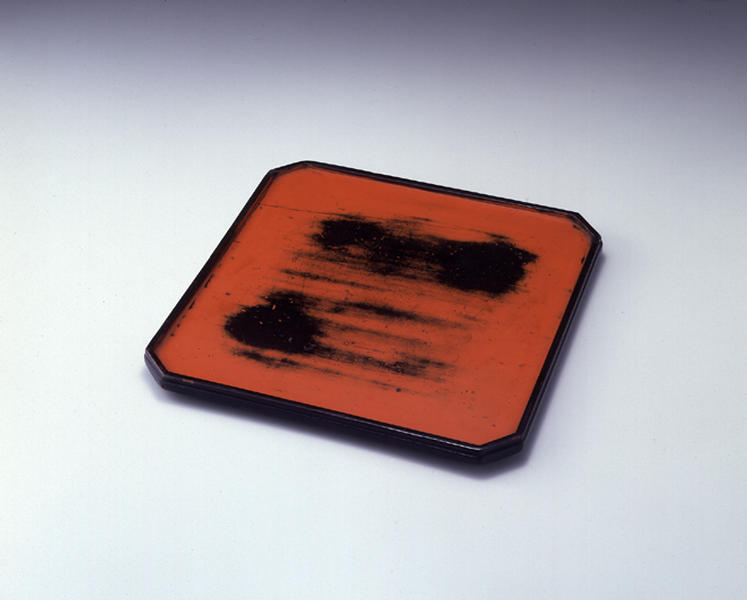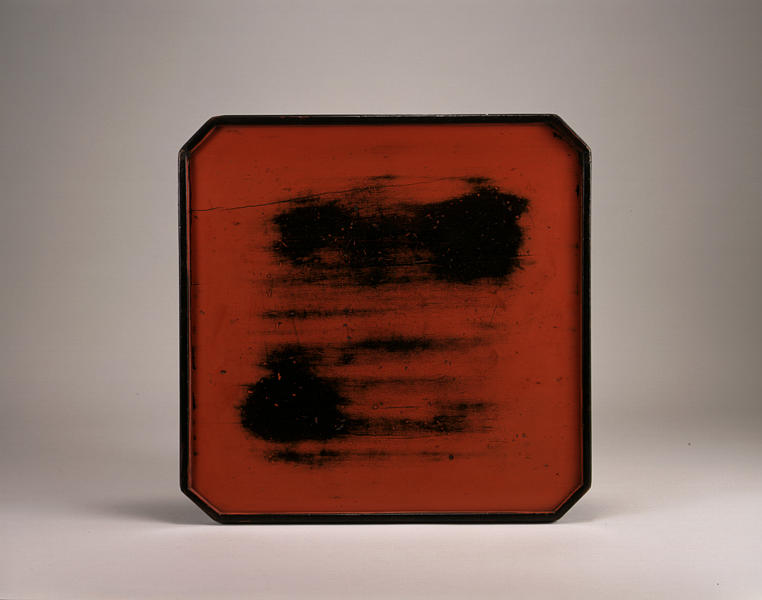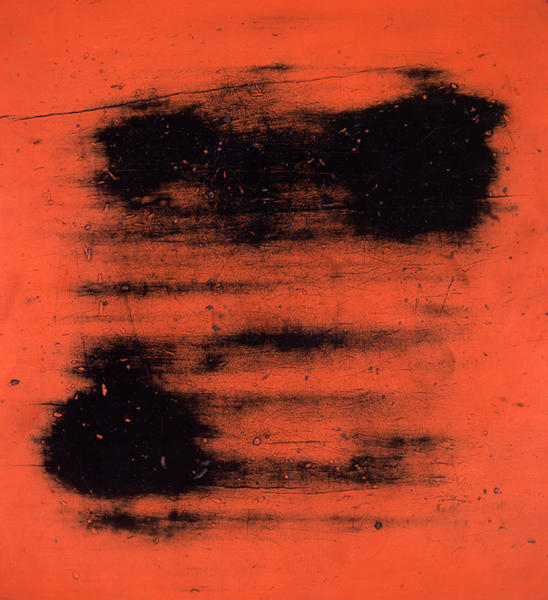根来角切盆
- 室町時代
- 15c
- 木製朱漆塗
- H-3 D-39 W-39.5
解説(春の玉手箱)
天板を朱漆で、裏面を黒漆で塗られたもので、方形の四隅を切り落とした形状はいわゆる角切折敷と称されるものである。丈の低い立上りを縁よりわずか内側に巡らせた形式は、奈良春日大社に伝来する散米折敷等の天板と同様である。また、裏面周辺部には面取りをもうけて薄手に仕上げ、さらに二本の桟脚を付ける。こうした形状から見て単なる食膳具ではなく神饌具等に使用されたものと思われる。
散米折敷は悪魔退散を祈って行なわれる米蒔きの行事に使用される盤であるが、この盤もそうした神事に使用されたものと合い通じる森厳な空気を感じさせ、天板に現れた根来特有の赤と黒の擦れ味は、見るものに深い余韻を与えてくれる。裏底に、「重■慶□坊 永享三年辛亥七月日儲之」の朱漆銘がある。
■はくさかんむりに弄
Catalogue Entry
A 3cm thick tray is red lacquered on the front, and black lacquered on the back, with its four corners cut away to form a modified octagonal form. The low edge curves in slightly towards the center, and this type of base board can also be found in the Sanmai‐Oshiki tray traditionally held at the Kasuga Shrine in Nara. Further, the surrounding edge of the back of the tray has been thinned and fitted with two framed legs. This format would seem to indicate that the tray was not simply used for the serving of food, but rather had some religious implement usage. The Sanmai‐Oshiki tray is a tray form used in the rice scattering rites held to ward off bad spirits, and here the severe mood of the tray would suit such ritual usage. The red and black pattern of lacquer layers seen on the surface of this tray resonates with the viewer's solemn spirit. The back is inscribed in red lacquer with a text that includes the date, 1431.


